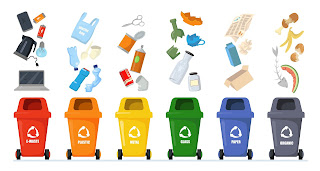Environmental Sustainability: Building a Greener Future Through Smarter Choices
The 21st century has brought extraordinary technological advances, global connectivity, and economic growth. But alongside this progress, we face a looming crisis: the degradation of our natural environment. From rising global temperatures and deforestation to ocean acidification and mass species extinction, the challenges are profound and far-reaching. At the heart of the solution lies environmental sustainability—a concept that emphasizes the urgent need to align human development with the planet’s ecological limits.
What Does Environmental Sustainability Really Mean?
Environmental sustainability refers to the responsible interaction with the environment to avoid depleting natural resources and to ensure the planet remains habitable for future generations. It involves protecting ecosystems, conserving biodiversity, reducing carbon emissions, and designing systems that regenerate rather than exploit Earth’s resources.
Unlike short-term fixes, environmental sustainability is about creating long-term solutions that balance economic growth, environmental protection, and social equity. It asks not just what we take from the environment, but how we give back—or at the very least, how we minimize harm.
The Urgent Need for Change
Why does environmental sustainability matter more than ever? Because the cost of inaction is rapidly escalating. According to the United Nations Environment Programme (UNEP), global consumption of natural resources could double by 2060 if current trends continue. This surge in demand will lead to increased greenhouse gas emissions, loss of biodiversity, and pollution.
More frequent droughts, floods, and wildfires are already displacing communities, damaging infrastructure, and threatening food and water supplies. These environmental disruptions have economic consequences too—costing billions in disaster recovery and putting supply chains at risk.
Sustainability is no longer a “nice to have”—it is a critical necessity. Ensuring environmental sustainability means ensuring the continued viability of economies, ecosystems, and societies.
Principles of Environmental Sustainability
To guide global and local efforts, environmental sustainability is built upon a few key principles:
1. Resource Efficiency
Using materials, water, and energy more efficiently helps minimize waste and reduces strain on the planet. This includes everything from energy-efficient buildings to sustainable farming practices that use fewer pesticides and fertilizers.
2. Ecosystem Preservation
Healthy ecosystems regulate climate, purify air and water, and support biodiversity. Protecting rainforests, wetlands, coral reefs, and grasslands is essential to maintaining the Earth’s natural balance.
3. Pollution Prevention
Sustainable practices seek to prevent pollution before it occurs. This includes reducing plastic use, managing industrial waste, and transitioning to clean transportation and renewable energy.
4. Circular Economy Thinking
A circular economy minimizes waste by keeping products, materials, and resources in use for as long as possible. It emphasizes repair, reuse, recycling, and remanufacturing over traditional linear models of “take, make, dispose.”
5. Equity and Inclusion
Sustainability efforts must also address environmental justice, ensuring that marginalized communities—who often bear the brunt of pollution and climate impacts—are included in solutions and decision-making.
How Businesses Can Champion Sustainability
Corporations are some of the most influential actors in the sustainability space. The way companies source raw materials, design products, manage waste, and operate their facilities has a profound impact on the environment.
Leading organizations are embracing sustainable business practices such as:
-
Setting net-zero emissions targets
-
Switching to renewable energy sources
-
Implementing sustainable packaging
-
Using lifecycle assessments to reduce product impact
-
Investing in carbon offsetting and reforestation programs
Beyond regulatory compliance, sustainability also builds brand trust. Today’s consumers, especially Gen Z and Millennials, prefer brands that demonstrate environmental and social responsibility. Employees, investors, and partners are also increasingly expecting companies to integrate sustainability into their core strategy.
Everyday Actions That Make a Difference
You don’t have to be a policymaker or CEO to make a meaningful contribution to environmental sustainability. Here are a few simple ways individuals can help:
-
Reduce waste by avoiding single-use plastics and composting food scraps.
-
Conserve energy by turning off lights, using efficient appliances, and adjusting thermostats.
-
Choose sustainable transportation such as biking, walking, carpooling, or taking public transit.
-
Support eco-conscious brands that use ethical sourcing and sustainable packaging.
-
Educate others and advocate for policies that protect the environment.
Every action, no matter how small, adds up. Environmental sustainability is not the responsibility of any one person or group—it’s a shared mission that requires collective action.
Making Sustainability Practical: The Example of SwagCycle
One often-overlooked source of waste in the business world is promotional merchandise—think branded water bottles, T-shirts, notebooks, and event giveaways. These items are often overproduced, become outdated quickly, or are discarded after a single use. While they’re created for marketing impact, they frequently result in environmental harm when they end up in landfills.
This is where SwagCycle makes a difference. SwagCycle is a platform that helps companies responsibly manage their surplus branded merchandise. Rather than letting unused swag go to waste, SwagCycle helps businesses recycle, upcycle, or donate these items to charitable organizations. By extending the life of promotional products and keeping them out of the waste stream, SwagCycle provides a smart, practical solution that aligns with the principles of environmental sustainability.
SwagCycle’s approach proves that even marketing departments can contribute to a greener future. It’s a reminder that sustainability doesn’t have to be complicated—it just requires intention, innovation, and a willingness to do better with what we already have.




Comments
Post a Comment